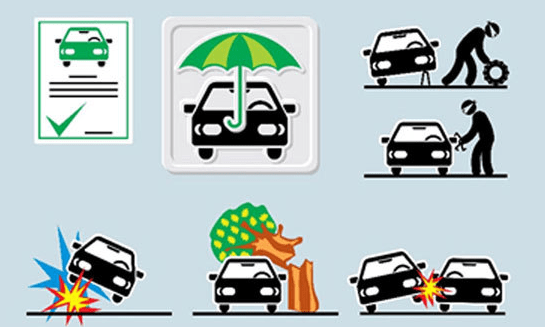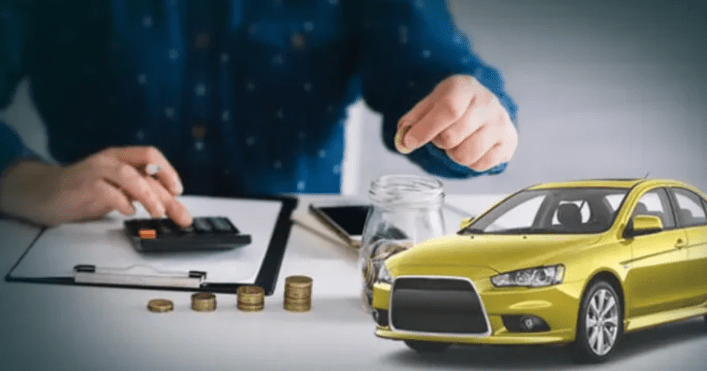Car insurance is not only a legal requirement in most places but also a crucial component of responsible vehicle ownership. It offers financial protection in the event of accidents, theft, or other unforeseen incidents. However, car insurance is not a one-size-fits-all solution. There are several types of car insurance coverage, each designed to address specific risks and needs. Understanding these different types of coverage is essential for making informed decisions about your car insurance policy. This article will explore the various types of car insurance coverage in detail, discussing their purposes, benefits, and the factors to consider when selecting the right coverage for your needs.
1. Liability Insurance
Liability insurance is the most fundamental and commonly required type of car insurance coverage. It protects you in the event that you are responsible for an accident that causes bodily injury or property damage to others. This coverage is typically divided into two categories:
- Bodily Injury Liability (BIL): This part of liability insurance covers medical expenses, lost wages, and legal fees for individuals injured in an accident where you are at fault. It can also cover funeral costs in the unfortunate event of a fatality.
- Property Damage Liability (PDL): This component covers the cost of repairing or replacing property damaged in an accident where you are at fault. This could include other vehicles, buildings, fences, or other structures.
Benefits of Liability Insurance:
- Legal Compliance: Most states and countries require vehicle owners to have a minimum amount of liability insurance. Failure to carry this coverage can result in fines, license suspension, or even legal action.
- Financial Protection: Liability insurance protects your financial assets by covering the costs associated with injuries or damages you cause to others in an accident.
- Peace of Mind: Knowing that you are covered in the event of an at-fault accident can provide significant peace of mind while driving.

Factors to Consider:
- Coverage Limits: Liability insurance policies have coverage limits, which is the maximum amount the insurer will pay per accident. It’s crucial to choose limits that provide adequate protection, especially if you have significant assets that could be at risk in a lawsuit.
- State Requirements: Each state has minimum coverage requirements for liability insurance. Make sure your policy meets or exceeds these requirements to avoid penalties.
2. Collision Insurance
Collision insurance covers the cost of repairing or replacing your vehicle if it is damaged in a collision with another vehicle or object, regardless of who is at fault. This type of coverage is particularly important for those who own newer or more valuable vehicles, as repair costs can be substantial.
Benefits of Collision Insurance:
- Protection for Your Vehicle: Collision insurance ensures that you can repair or replace your vehicle after an accident, even if you are at fault.
- Loan or Lease Requirement: If you are financing or leasing your vehicle, your lender or leasing company may require you to carry collision insurance to protect their investment.
Factors to Consider:
- Deductible: The deductible is the amount you must pay out of pocket before your collision coverage kicks in. Choosing a higher deductible can lower your premium, but it also means you’ll pay more if you need to file a claim.
- Vehicle Value: Consider the value of your vehicle when deciding on collision coverage. If your car is older and has depreciated significantly, it may not be worth the cost of collision insurance.
3. Comprehensive Insurance
Comprehensive insurance covers damage to your vehicle caused by non-collision events, such as theft, vandalism, natural disasters, fire, and collisions with animals. This type of coverage is often paired with collision insurance to provide more complete protection for your vehicle.
Benefits of Comprehensive Insurance:
- Broad Coverage: Comprehensive insurance protects against a wide range of risks that could damage or destroy your vehicle, providing peace of mind in various scenarios.
- Required by Lenders: Like collision insurance, comprehensive coverage is often required by lenders or leasing companies to protect their financial interest in the vehicle.
Factors to Consider:
- Deductible: As with collision insurance, comprehensive coverage comes with a deductible. Evaluate your financial situation and risk tolerance when choosing your deductible.
- Vehicle Location and Usage: If you live in an area prone to natural disasters, theft, or vandalism, comprehensive insurance is particularly important. Consider your environment and driving habits when deciding on this coverage.
4. Personal Injury Protection (PIP)
Personal Injury Protection, commonly known as PIP or no-fault insurance, covers medical expenses, lost wages, and other related costs for you and your passengers, regardless of who is at fault in an accident. In some states, PIP is mandatory, while in others, it is optional.
Benefits of PIP:
- Covers Medical Costs: PIP ensures that you and your passengers can receive medical treatment after an accident, without worrying about who was at fault.
- Additional Coverage: PIP can also cover expenses beyond medical bills, such as lost wages, rehabilitation costs, and funeral expenses.
Factors to Consider:
- State Requirements: PIP is mandatory in some states, particularly those with no-fault insurance laws. Check your state’s requirements to ensure you have the necessary coverage.
- Health Insurance: If you have comprehensive health insurance, you may not need extensive PIP coverage. Consider how your health insurance and PIP can complement each other to avoid unnecessary costs.
5. Uninsured/Underinsured Motorist Coverage
Uninsured/underinsured motorist coverage protects you if you are involved in an accident with a driver who either has no insurance or insufficient coverage to pay for the damages. This coverage can be divided into two main types:
- Uninsured Motorist Bodily Injury (UMBI): Covers medical expenses, lost wages, and other injury-related costs if you are hit by an uninsured driver.
- Uninsured Motorist Property Damage (UMPD): Covers the cost of repairing or replacing your vehicle if it is damaged by an uninsured driver.
Benefits of Uninsured/Underinsured Motorist Coverage:
- Protection Against Uninsured Drivers: Despite legal requirements, many drivers on the road are uninsured. This coverage ensures that you are not left paying out of pocket if you are hit by one of these drivers.
- Covers Gaps in Other Drivers’ Insurance: Even if the other driver has insurance, it may not be enough to cover all your costs. Underinsured motorist coverage can make up the difference.
Factors to Consider:
- State Requirements: Some states require uninsured/underinsured motorist coverage, while others make it optional. Be sure to understand your state’s laws.
- Personal Risk Tolerance: If you live in an area with a high number of uninsured drivers, or if you frequently drive in areas with a high risk of accidents, this coverage may be particularly important.
6. Gap Insurance
Gap insurance is designed to cover the difference between the actual cash value (ACV) of your vehicle and the amount you still owe on your loan or lease if your vehicle is totaled or stolen. This coverage is particularly important for new cars, which can depreciate quickly.
Benefits of Gap Insurance:
- Protects Against Depreciation: Vehicles lose value quickly, especially in the first few years. Gap insurance ensures that you won’t be left paying off a loan for a car you no longer have.
- Lender Requirement: If you finance or lease your vehicle, your lender may require you to carry gap insurance to protect their financial interest.
Factors to Consider:
- Vehicle Depreciation: If you have a new or relatively new car, gap insurance is a wise investment due to rapid depreciation. However, if your car is older and has already depreciated significantly, you may not need gap insurance.
- Loan or Lease Terms: Consider the terms of your loan or lease when deciding on gap insurance. If you have a long-term loan or lease with a small down payment, gap insurance is more likely to be necessary.
7. Medical Payments Coverage (MedPay)
Medical payments coverage, often referred to as MedPay, is similar to PIP in that it covers medical expenses for you and your passengers, regardless of who is at fault in an accident. However, MedPay typically does not cover lost wages or other non-medical expenses.
Benefits of MedPay:
- No-Fault Coverage: MedPay ensures that you and your passengers can receive medical treatment after an accident, regardless of fault.
- Supplementary Coverage: MedPay can be used as a supplement to health insurance or PIP, helping to cover out-of-pocket medical expenses.

Factors to Consider:
- Health Insurance: If you have comprehensive health insurance, MedPay may not be necessary. However, it can still be a valuable supplement for covering deductibles or other out-of-pocket expenses.
- State Requirements: MedPay is optional in most states, but some may require it or offer it as part of a standard insurance package.
8. Rental Reimbursement Coverage
Rental reimbursement coverage helps pay for the cost of a rental car while your vehicle is being repaired after an accident. This coverage is typically optional and can be added to your policy for an additional premium.
Benefits of Rental Reimbursement Coverage:
- Convenience: If your vehicle is in the shop for repairs, rental reimbursement coverage ensures that you won’t be left without transportation.
- Affordable: Rental reimbursement coverage is usually inexpensive and can provide significant value if you rely on your vehicle for daily transportation.
Factors to Consider:
- Availability of Alternative Transportation: If you have access to another vehicle or public transportation, you may not need rental reimbursement coverage.
- Cost vs. Benefit: Consider the cost of adding rental reimbursement coverage to your policy versus the potential cost of renting a car out-of-pocket.
9. Roadside Assistance Coverage
Roadside assistance coverage provides help if your vehicle breaks down or you experience other issues while driving, such as a flat tire, dead battery, or lockout. This coverage is often available as an add-on to your car insurance policy or through membership organizations like AAA.
Benefits of Roadside Assistance Coverage:
- Peace of Mind: Knowing that help is just a phone call away can provide peace of mind, especially if you frequently drive in remote areas or during adverse weather conditions.
- Convenience: Roadside assistance can save you time and hassle by providing on-the-spot help for common vehicle issues.
Factors to Consider:
- Frequency of Use: If you frequently drive long distances or in areas with limited access to services, roadside assistance coverage is highly valuable.
- Cost: Roadside assistance coverage is typically inexpensive, but it’s important to consider whether you need it based on your driving habits and vehicle reliability.
10. Custom Parts and Equipment Coverage
Custom parts and equipment coverage is designed to protect aftermarket additions or modifications to your vehicle, such as custom wheels, stereo systems, or performance enhancements. Standard insurance policies may not cover these items, so additional coverage is necessary to protect your investment.
Benefits of Custom Parts and Equipment Coverage:
- Protects Your Investment: If you’ve invested in custom parts or modifications for your vehicle, this coverage ensures that they are protected in the event of damage or theft.
- Specialized Coverage: Custom parts and equipment coverage is specifically designed to address the unique risks associated with aftermarket modifications.
Factors to Consider:
- Value of Modifications: Consider the value of your custom parts and equipment when deciding on this coverage. If your modifications are significant, this coverage is essential.
- Documentation: Be sure to keep detailed records and receipts for all custom parts and modifications, as your insurer may require this information in the event of a claim.
11. Classic Car Insurance
Classic car insurance is a specialized type of coverage designed for vintage, antique, or collectible vehicles. These vehicles often have unique needs and values that standard insurance policies may not adequately address. Classic car insurance typically offers agreed value coverage, which means that you and the insurer agree on the vehicle’s value upfront, rather than relying on standard depreciation calculations.
Benefits of Classic Car Insurance:
- Agreed Value Coverage: Classic car insurance policies typically offer agreed value coverage, ensuring that you receive the full insured value of your vehicle in the event of a total loss.
- Specialized Protection: Classic car insurance is tailored to the unique needs of vintage and collectible vehicles, offering coverage for spare parts, restoration, and limited use.
Factors to Consider:
- Vehicle Qualification: Not all vehicles qualify for classic car insurance. Insurers typically have specific criteria regarding the age, condition, and use of the vehicle.
- Usage Limitations: Classic car insurance policies often have usage restrictions, such as limits on mileage or requirements that the vehicle be stored in a secure location.
Conclusion
Understanding the different types of car insurance coverage is essential for making informed decisions about your policy. Whether you’re a new driver purchasing your first insurance policy or an experienced driver reviewing your existing coverage, it’s important to consider your specific needs, vehicle value, and driving habits when selecting coverage.
Each type of coverage offers distinct benefits and protections, from liability insurance, which is legally required in most places, to specialized options like classic car insurance or custom parts coverage. By carefully evaluating your options and working with a knowledgeable insurance agent, you can build a policy that provides comprehensive protection for you, your passengers, and your vehicle.
Regularly reviewing and updating your car insurance policy is also crucial as your circumstances change. Whether you’re purchasing a new vehicle, moving to a different location, or making modifications to your car, keeping your coverage up to date ensures that you’re always adequately protected on the road.




